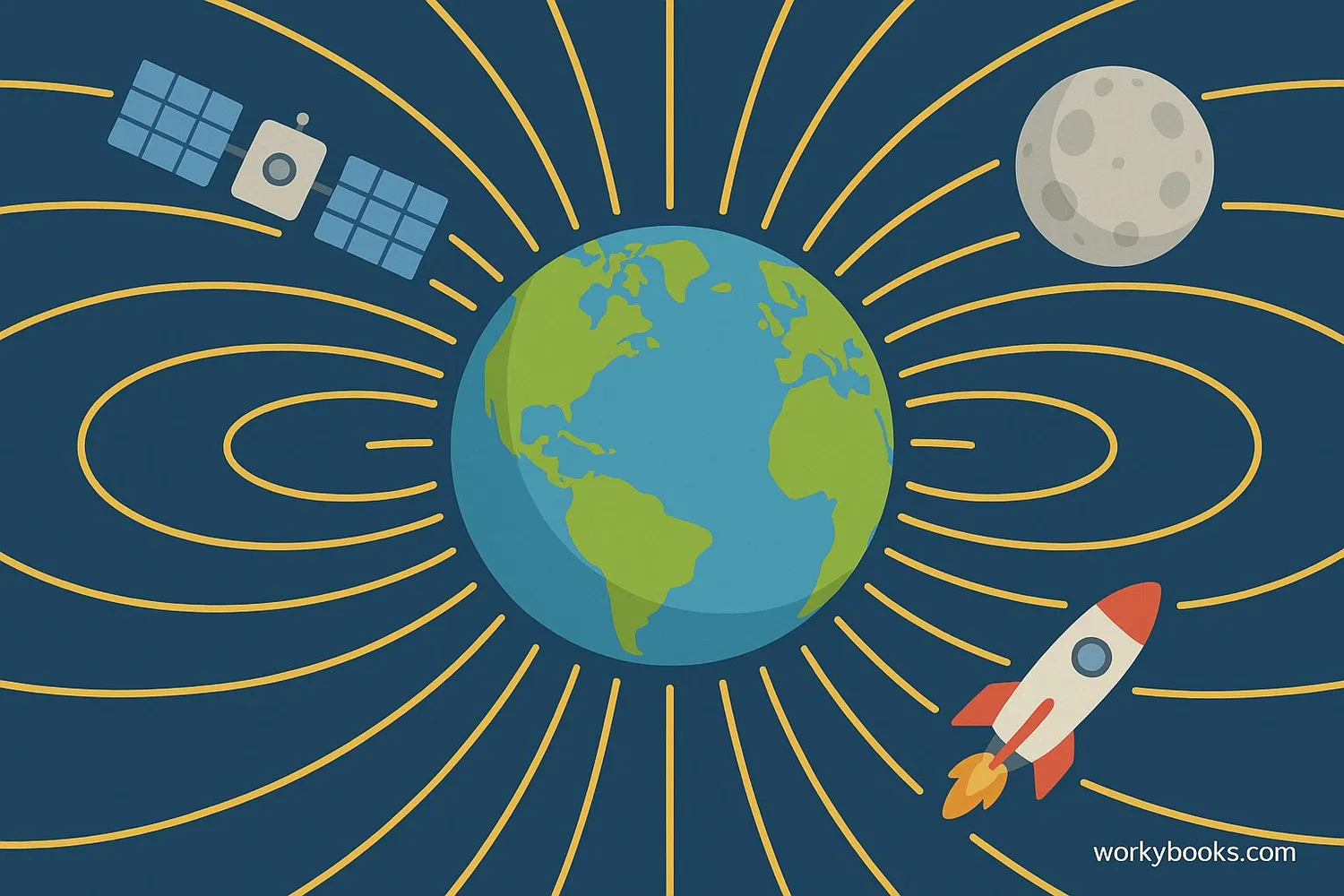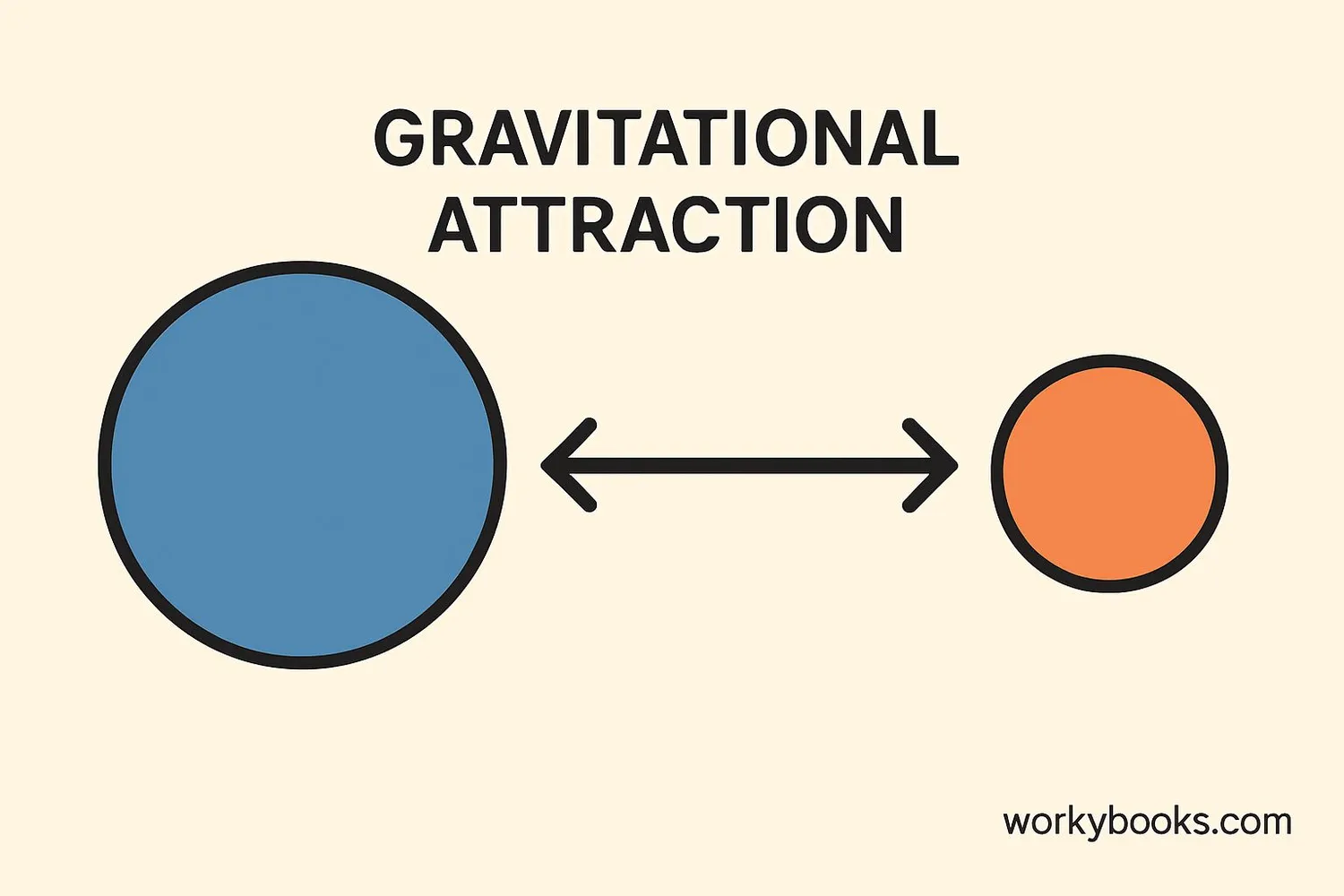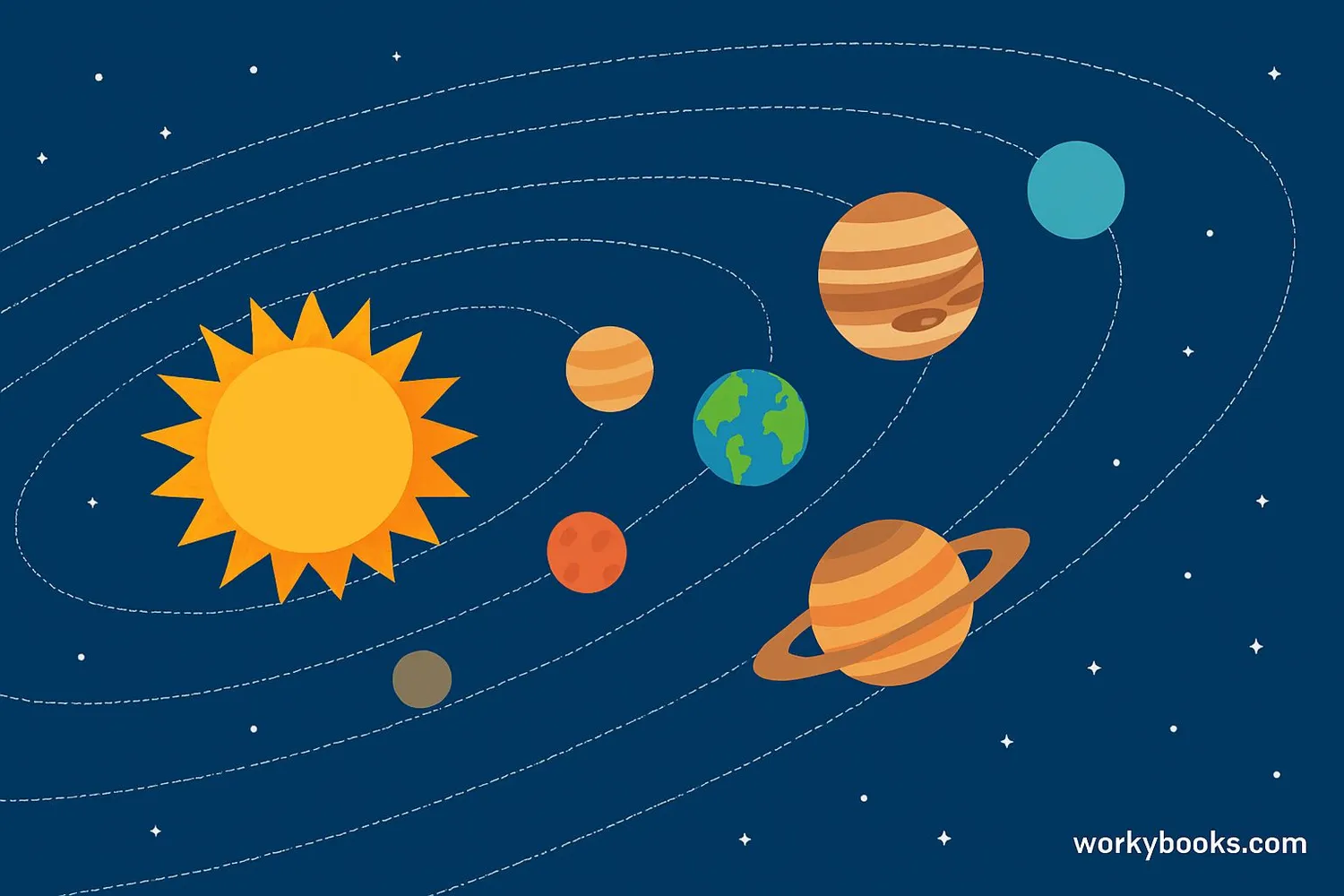Gravitational Field - Definition, Examples, Quiz, FAQ, Trivia
Discover how gravity works across space and affects everything around us!
What is a Gravitational Field?

A gravitational field is the invisible area of influence around any object with mass. It's like an invisible force field that pulls other objects toward it. The larger the object's mass, the stronger its gravitational field.
Think of it like this: when you place a heavy ball on a stretched rubber sheet, it creates a dip. Any smaller ball placed on that sheet will roll toward the heavier ball. This is similar to how planets create "dips" in space that pull objects toward them.
Every object with mass - from tiny atoms to enormous planets - has a gravitational field. But we usually only notice the gravitational fields of very massive objects like Earth, which keeps us firmly on the ground!
Science Fact!
Even you have a gravitational field! It's just very weak compared to Earth's because your mass is much smaller.
How Gravitational Fields Work

Gravitational fields work through a property of physics called space-time curvature. This might sound complicated, but it simply means that massive objects actually bend the space around them, and this bending is what we experience as gravity.
Mass Creates Field
Any object with mass creates a gravitational field around it
Field Strength
Larger mass = stronger gravitational field
Distance Matters
The force weakens as distance increases
Mutual Attraction
All objects with mass attract each other
Acceleration
Objects accelerate toward each other
The strength of a gravitational field is measured by how much force it would exert on an object at a specific point. On Earth's surface, this is approximately 9.8 meters per second squared (9.8 m/s²), which we often round to 10 m/s² for simpler calculations.
Sir Isaac Newton discovered that the gravitational force between two objects depends on both their masses and the distance between them. This is described by the formula:
F = G × (m₁ × m₂) / r²
Where F is the gravitational force, G is the gravitational constant, m₁ and m₂ are the masses, and r is the distance between them.
Universal Force!
Gravity is the weakest of the four fundamental forces in nature, but it acts over the longest distances and affects everything with mass.
Why Gravitational Fields Are Important

Gravitational fields are essential for the structure of our universe and our daily lives. Here's why they're so important:
Planetary Orbits
Keeps planets in orbit around stars and moons around planets
Tides
Creates ocean tides through the Moon's gravitational pull
Atmosphere Retention
Holds atmospheres around planets, allowing life to exist
Without gravitational fields, there would be no:
• Planets orbiting stars
• Galaxies holding together
• Atmosphere on Earth
• Tides in our oceans
• Objects staying on planetary surfaces
Gravitational fields also help scientists understand the universe. By studying how light bends around massive objects (gravitational lensing), astronomers can learn about distant galaxies and even detect dark matter!
Gravitational Field Quiz
Test your knowledge with this quiz about gravitational fields! Answer all 5 questions to see how much you've learned.
Frequently Asked Questions
Here are answers to some common questions about gravitational fields:
Interesting Facts About Gravitational Fields
Discover some amazing facts about gravitational fields!
Weight Changes
Your weight changes slightly throughout the day as the Moon's gravitational field affects Earth! The difference is tiny (about 0.00000001%), but it's measurable with sensitive instruments.
Black Hole Gravity
Black holes have the strongest gravitational fields in the universe. Their gravity is so powerful that not even light can escape once it gets too close to the event horizon.
Gravity and Time
Strong gravitational fields actually slow down time! This effect, called gravitational time dilation, means clocks run slightly slower on Earth's surface than in space.
Gravity Detection
Scientists can detect tiny changes in Earth's gravitational field using special satellites. These measurements help us understand ocean currents, groundwater changes, and even magma movement under volcanoes.


